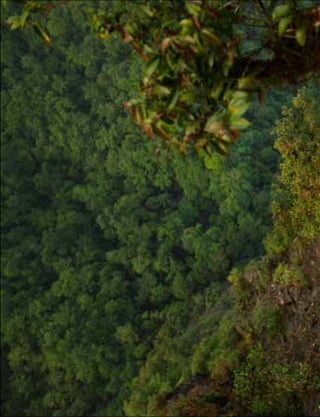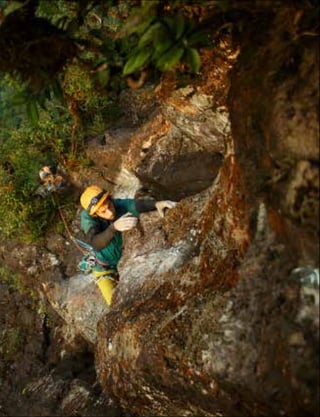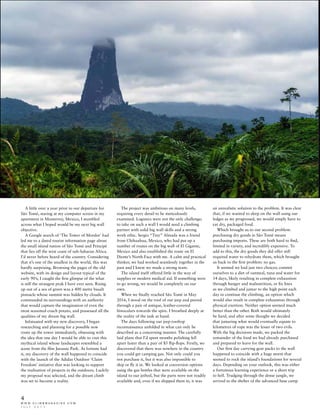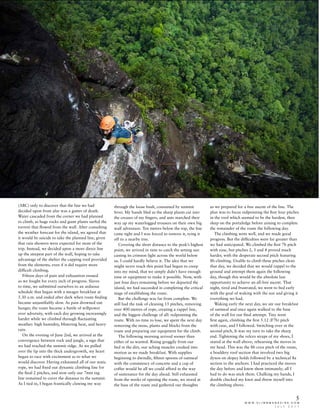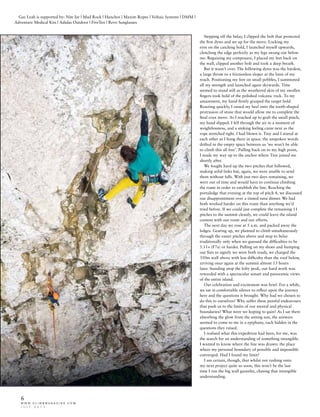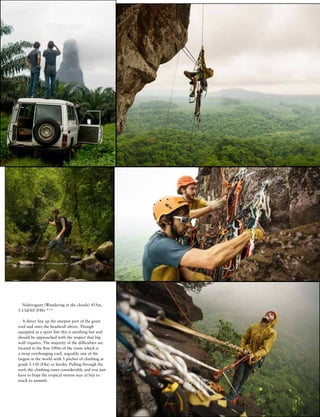The document describes the authors' ambitious attempt to establish a new route up a 400-meter basalt pinnacle on the small island nation of São Tomé and Principé off the west coast of Africa. They faced numerous logistical challenges with limited supplies and medical aid available on the remote island. After 15 days of difficult climbing through varying weather, they succeeded in opening the route but still had to clean it and achieve the first free ascent. On their final attempt at the hardest pitches, the author stuck two big dynos and overcame the 8b crux, completing the first free ascent of this challenging new route.
